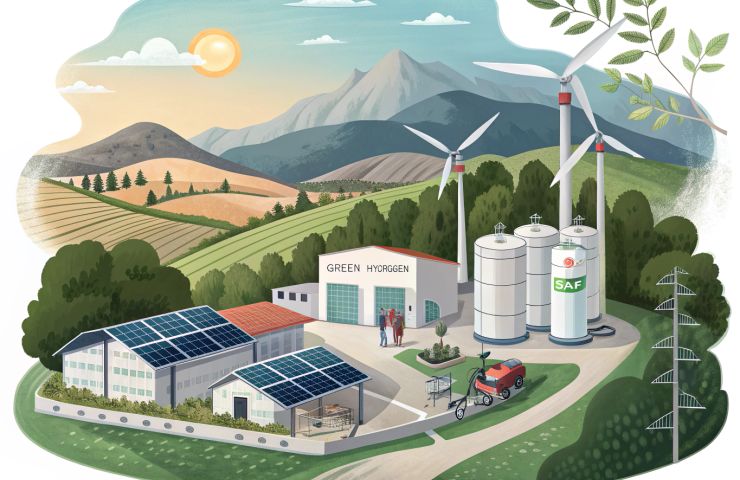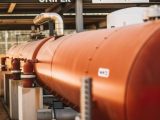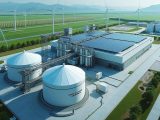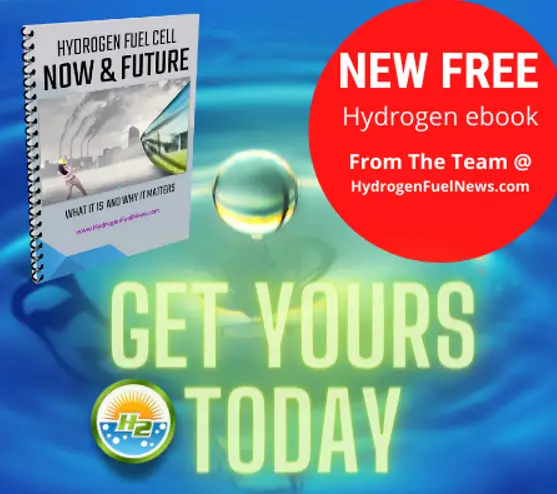
RIC Energy and Siemens Partner to Accelerate Green Hydrogen and E-Fuels Expansion in Spain
May 30, 2025Spain’s Green Hydrogen Journey Gets a Powerful Ally in Siemens and RIC Energy
In a big move that could supercharge Spain’s clean energy momentum, RIC Energy and Siemens have officially teamed up. The two companies just signed a memorandum of understanding (MoU) to kick off several game-changing projects focused on green hydrogen, clean ammonia, and e-fuels in key industrial zones—specifically León and Cantabria. This isn’t just another agreement filled with buzzwords—it’s about building serious infrastructure to position Spain as a clean energy trailblazer. At the heart of it are two flagship projects: the Compostilla Green facility in El Bierzo and the Besaya synthetic fuels initiative in Torrelavega. Both are designed to push Spain to the front of the pack in green hydrogen production and sustainable aviation fuel (SAF), while helping revive former industrial regions.
What’s in the Deal?
This MoU covers a lot more than plant construction—it lays out a wide-ranging roadmap for rolling out clean tech at scale. Key focus areas include:
- Building and optimizing facilities to produce hydrogen, ammonia, and synthetic fuels
- Driving automation and smart tech through Siemens’ advanced digital solutions
- Teaming up on project financing and smart business models
- Creating end-to-end supply networks in the clean energy space
To pull this off, Siemens is bringing in serious muscle across its divisions—Siemens SA, Industry Software, Financial Services, and Innovation Strategies—to cover everything from design and data to dollars and delivery.
Decarbonizing While Rebuilding Communities
El Bierzo and Torrelavega aren’t random dots on a map. They’ve got deep industrial roots, from mining to heavy manufacturing, but were hit hard during Spain’s move away from fossil fuels. Now, they’ve got a shot at a second wind. Backed by electrolysis-based hydrogen and CO₂-to-fuel conversion technology, these projects aren’t just about cutting emissions—they’re about creating meaningful change. We’re talking:
- Boosting employment in everything from construction to operations
- Building local supply chains and transferring high-demand skills
- Drastically reducing emissions in challenging sectors like shipping and aviation
How the Tech Comes Together
At the core of both projects is green hydrogen, which is made by splitting water using renewable electricity—so no emissions at the point of production. Pair that hydrogen with captured CO₂, and you’ve got synthetic fuels like sustainable aviation fuel. That’s a huge deal for cleaning up long-haul air travel. The Compostilla Green facility is particularly key and has even been recognized by IDAE, Spain’s National Energy Agency, as part of the national Hydrogen Valleys initiative focused on SAF innovation. Meanwhile, green ammonia—created by combining hydrogen and nitrogen powered entirely by renewables—opens up tons of possibilities. It’s not just fuel; it’s a building block for everything from fertilizers to hydrogen storage and maritime shipping.
More Than Bricks and Mortar: Siemens’ Digital and Financial Edge
Siemens isn’t new to the hydrogen game—they’ve been at this for decades, especially when it comes to automating complex industrial systems. What makes this partnership interesting is how deep Siemens is willing to go. Their secret sauce? Integrating tools like digital twins, predictive analytics, and real-time optimization software to make hydrogen ecosystems actually work at scale. And let’s not overlook the money side. Through Siemens Financial Services, they’re bringing in the brains and the bucks to get these capital-heavy projects off the ground in a smart, scalable way. As one Siemens exec put it recently, “We don’t just build plants. We optimize entire value chains—from electrons to molecules.”
Why Now? The Policy Push and Market Potential
The timing of this partnership couldn’t be better—it hooks perfectly into the momentum of Spanish and EU energy policy. Here’s the bigger picture:
- The European Green Deal puts heavy emphasis on SAF and hydrogen corridors
- Post-pandemic recovery funds are fueling industrial decarbonization projects
Add to that Spain’s natural solar and wind strengths, and it’s clear the country has a unique edge in renewable energy. With more than 15 GW of renewable assets under its belt worldwide, RIC Energy is more than ready to deliver.
The Challenges Ahead
Let’s be real—it’s not all smooth sailing. Big clean energy projects like this come with their share of hurdles:
- Financing is still tricky: These projects need a lot of upfront capital, even with strong partners involved.
- Tech is still maturing: E-fuel production tech is promising, but still early-stage when it comes to mass deployment.
- Regulation is lagging: Standards and permitting for SAF and clean ammonia need to catch up, especially across different EU regions.
Still, the whole point of bringing Siemens and RIC together is to smooth those bumps in the road. With smart planning and integrated delivery strategies, they’re hoping to streamline everything from approval processes to actual construction and operations.
What’s Next on the Horizon?
Official build-out timelines haven’t been revealed (not yet, anyway), but groundwork is expected to pick up pace by late 2024. And if this model works as planned, both companies see major potential to replicate it elsewhere across Europe—think more hydrogen valleys, more synthetic fuel hubs, and a serious move away from fossil-based fuels. At the end of the day, if Compostilla and Besaya take off as expected, Spain won’t just be producing energy—it could be exporting it, not as gigawatts, but as clean, carbon-free molecules.
Meet the Powerhouses Behind the Plan
RIC Energy is a Spanish-based global independent power producer with a serious focus on scaling up both established and emerging renewables. With projects in solar, wind, biogas, battery storage, and sustainable fuels across four continents, they know their stuff. Siemens, the German industrial giant, brings decades of engineering know-how and tech innovation. Now, they’re going all-in on the hydrogen and e-fuels space, combining their strengths across automation, finance, and digitalization to help bring tomorrow’s energy system to life today.



 With over 15 years of reporting hydrogen news, we are your premier source for the latest updates and insights in hydrogen and renewable energy.
With over 15 years of reporting hydrogen news, we are your premier source for the latest updates and insights in hydrogen and renewable energy.